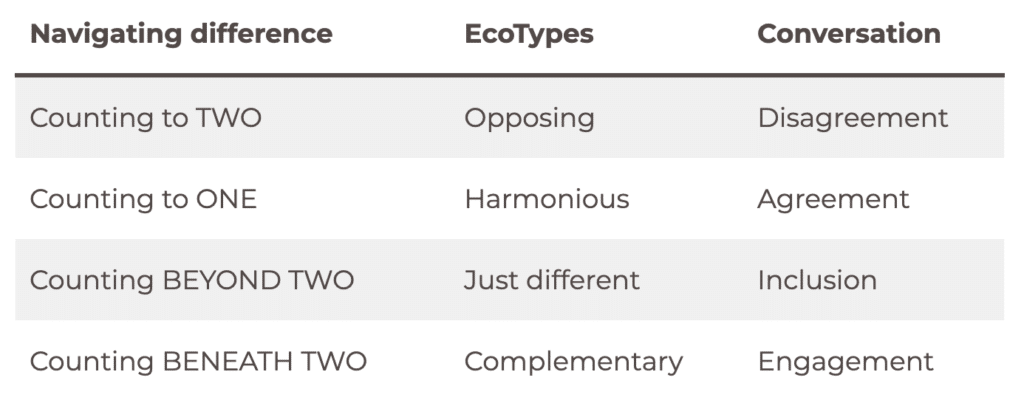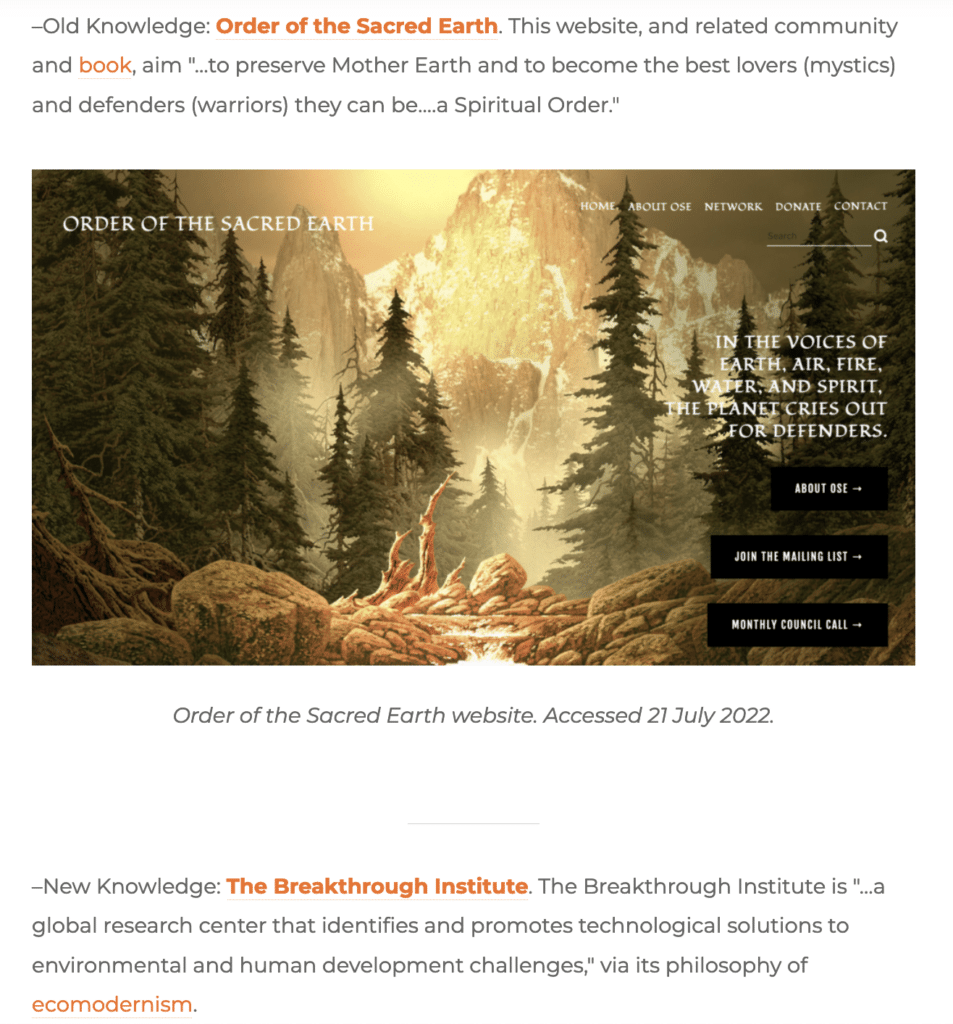While completing the EcoTypes survey, there was an option to enter your email address to receive the link to a customized EcoTypes reflection form. You can still complete the reflection form if you saved your survey key. Here’s more information to get started!
Overview | Samples | Get reflection form
Overview
The survey report you receive upon completing the EcoTypes survey gets you started with your survey results. But to appreciate what your EcoTypes survey results say about you, and to apply these results to successfully navigate differences between how you and others approach environmental issues, we urge you to complete the followup reflection form. It’s a customized form based on your survey results, so you have to complete the survey first.
The reflection form will take you up to one hour (you must complete the form all at once, so make sure to reserve sufficient time), and you’ll receive a copy of your responses via email as proof as you completed the form.
The reflection form will talk you through four broad steps:
- Axes. You will identify one axis where your responses tended strongly toward the left or right pole, and another axis where your responses tended toward the middle. You’ll then reflect briefly on your responses to each.
- Themes. The form will remind you of your Place, Knowledge, and Action theme scores. You’ll visit websites characteristic of the attractors for each, reflect on your scores relative to these attractors, and reflect on navigating their differences.
- EcoTypes. The form will then remind you of your EcoType, and your complementary (opposite) EcoType, with help via EcoTypes personae. It will present you with several ways of navigating their differences, and ask you to reflect on your preferred approach.
- Global Priorities. Finally, the form will consider applications toward global priorities as summarized via the U.N. Sustainable Development Goals (SDGs). You will choose one important SDG, connect it with a related axis, theme, and EcoType, and ultimately reflect on the possibility that many care, just differently, in the context of these SDGs.
For each of these broad steps, you will complete an open-ended question. This interactive feature gives you the opportunity to process the information you’ll see on each page.
Samples
Below are a few screenshots of key elements and advanced concepts introduced in the reflection form, for your reference.
EcoTypes proceeds from 12 axes to three themes to your EcoType based on these themes. A major component of the reflection form are the Place, Knowledge, and Action themes, as these summarize the biggest differences among thousands of people who have completed the EcoTypes survey. These differences are conveyed via attractors: statistically determined extremes for each theme (see the EcoTypes FAQ “What is the theory underlying EcoTypes?” for a fuller overview). The reflection form includes links and descriptions of representative websites for each attractor. How do you navigate differences in the context of Place, Knowledge, and Action attractors? You’ll consider this broad question in the reflection form.


Navigating Difference tables; click to expand.
Another important concept you’ll discover in the reflection form is a variety of approaches to navigating difference, summarized as “counting”; see the EcoTypes FAQ (“What is the theory underlying EcoTypes?”) for a fuller overview. The first step distinguishes between counting to one and two; you’ll ultimately learn four ways, summarized as in the above, and apply these four ways to imagining a conversation you might have with someone whose EcoType is the opposite of yours—your complementary EcoType. EcoTypes ultimately points to “counting beneath two,” i.e., engagement across difference toward complementarity.
The final thing you’ll do on the reflection form is apply what you learned about axes, themes, and EcoTypes to global priorities, which can be summarized via the U.N. Sustainable Development Goals (SDGs). You’ll choose one priority SDG, and consider one axis, one theme, and one EcoType that are connected to this SDG. This final component is designed for you to think about EcoTypes in the grounded context of global priorities: what we want in this world we share. EcoTypes, and its exploration of the possibility that many care, just differently, can sound abstract, but axes, themes, and EcoTypes relate to the issues we care about, including global issues, in important ways; this final page gives you the opportunity to consider these applications.
Get reflection form
Ready to begin the reflection form? Just enter your EcoTypes survey key below.

